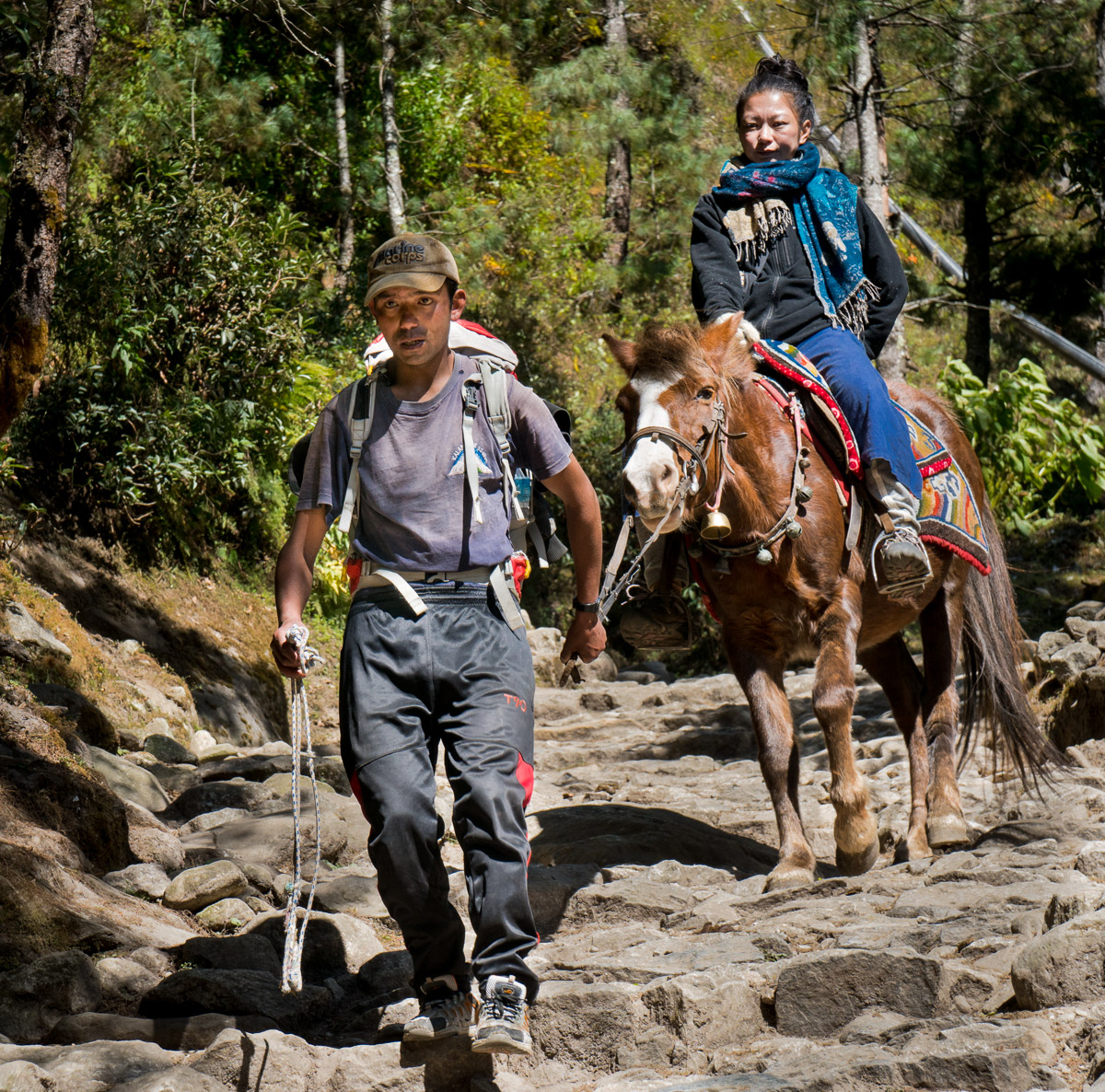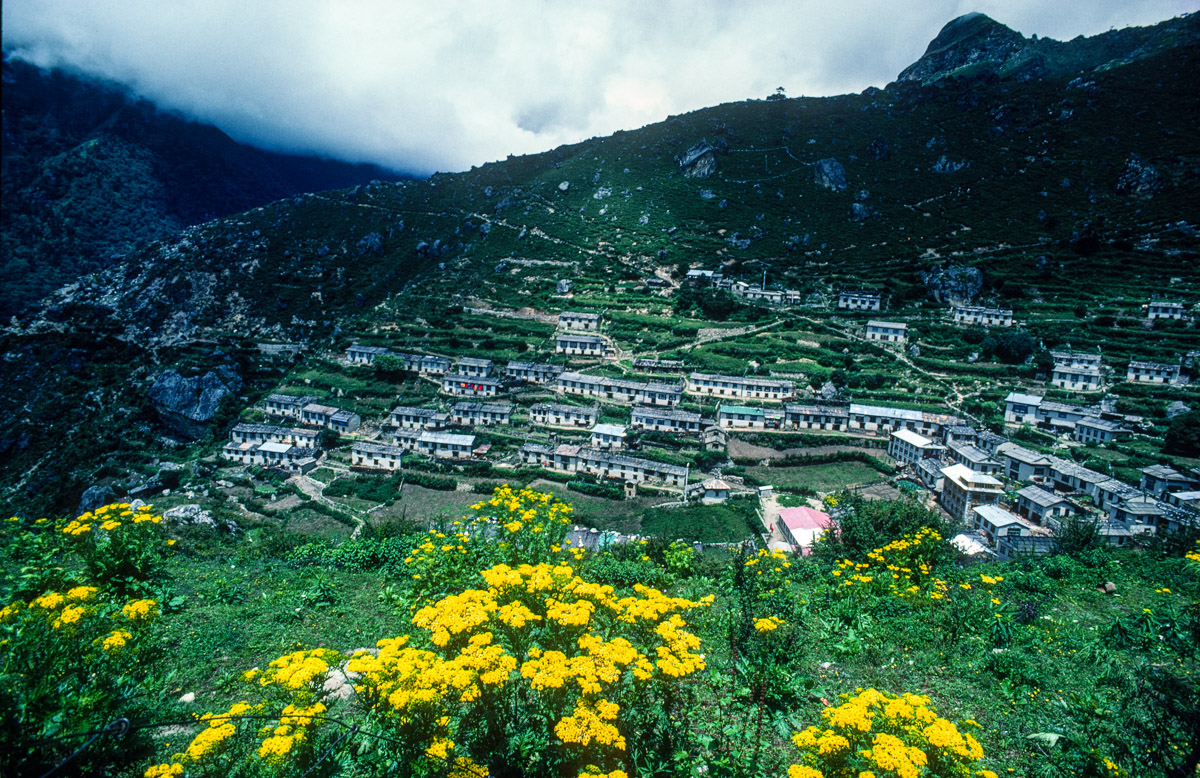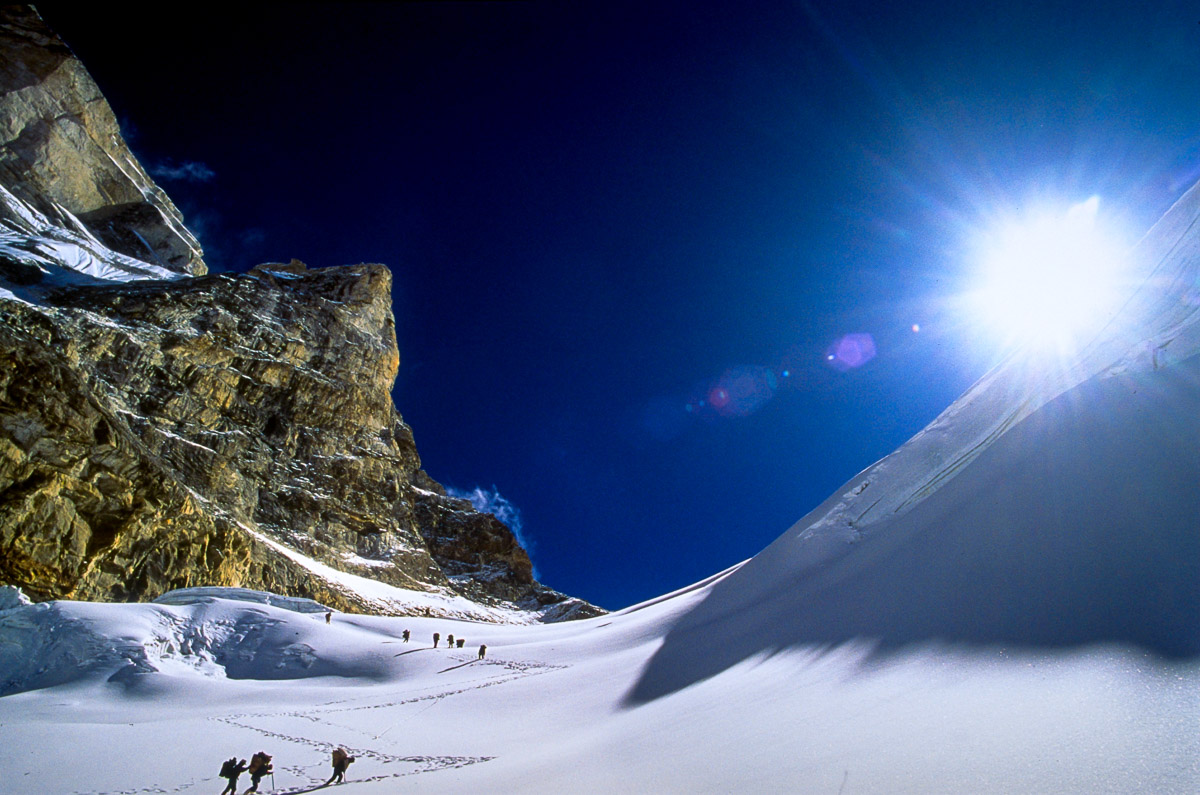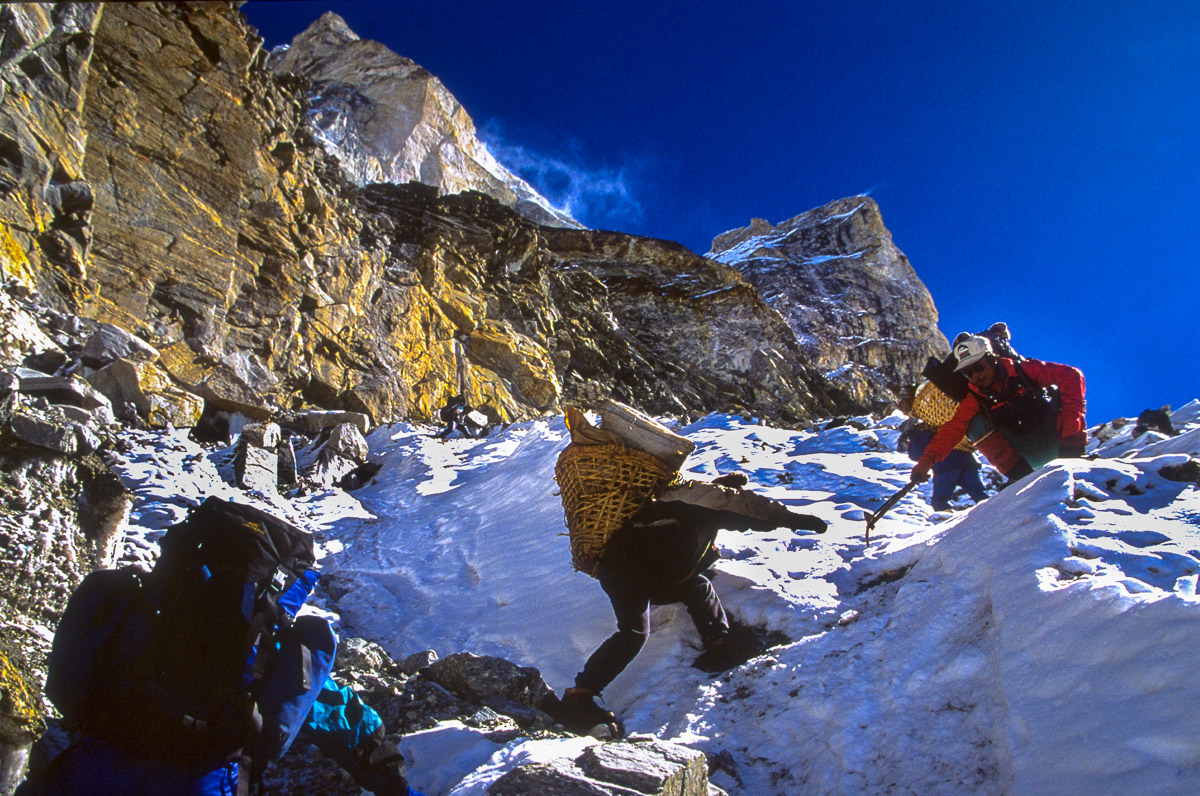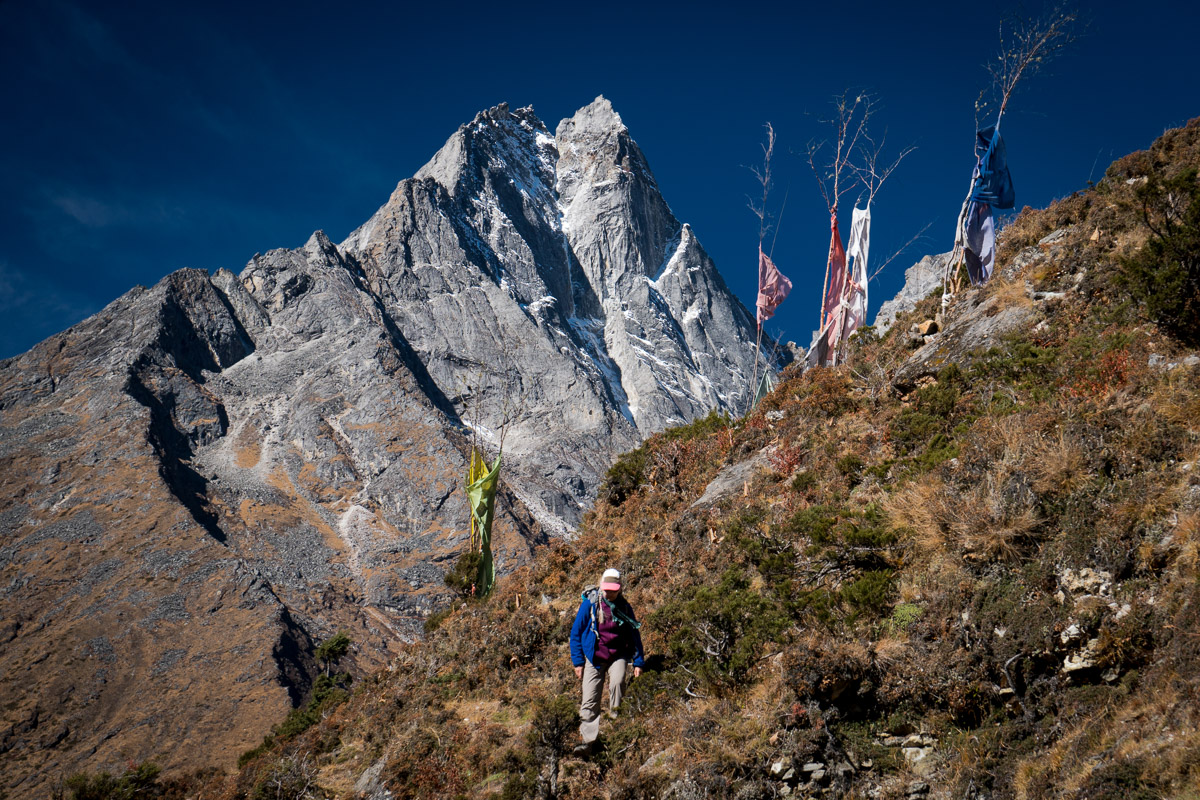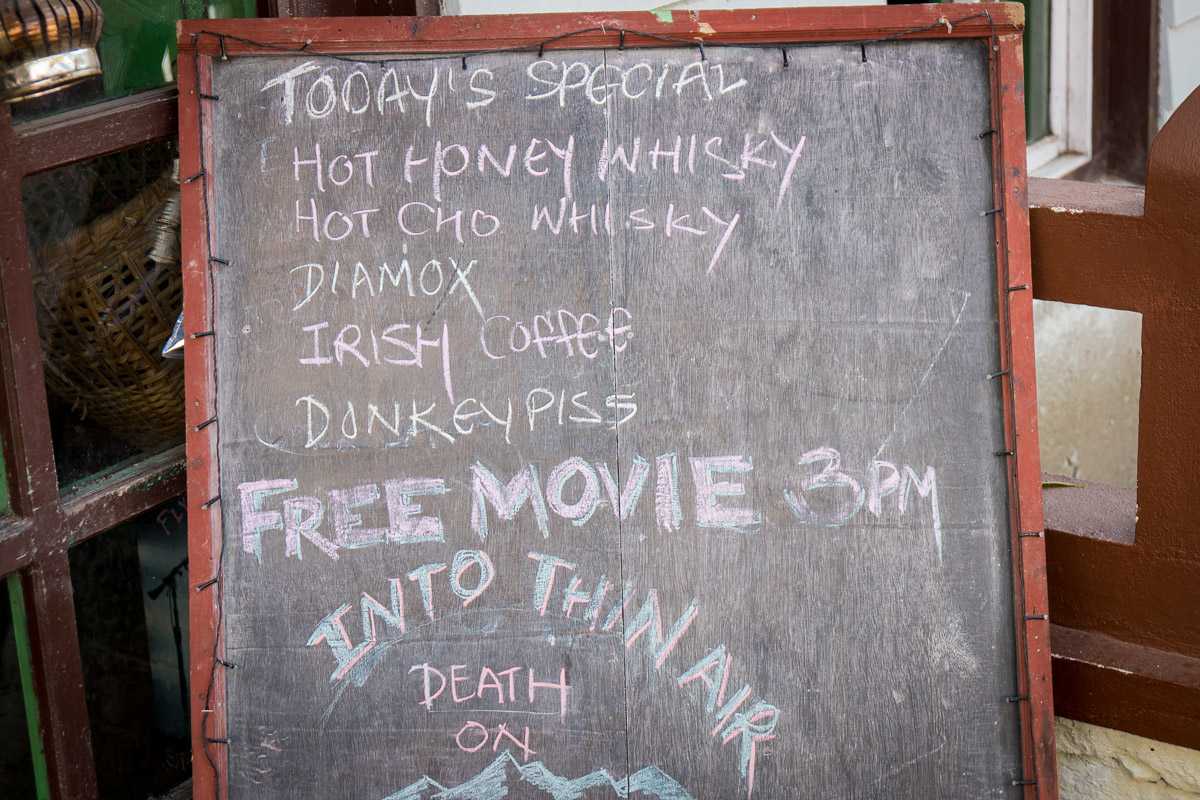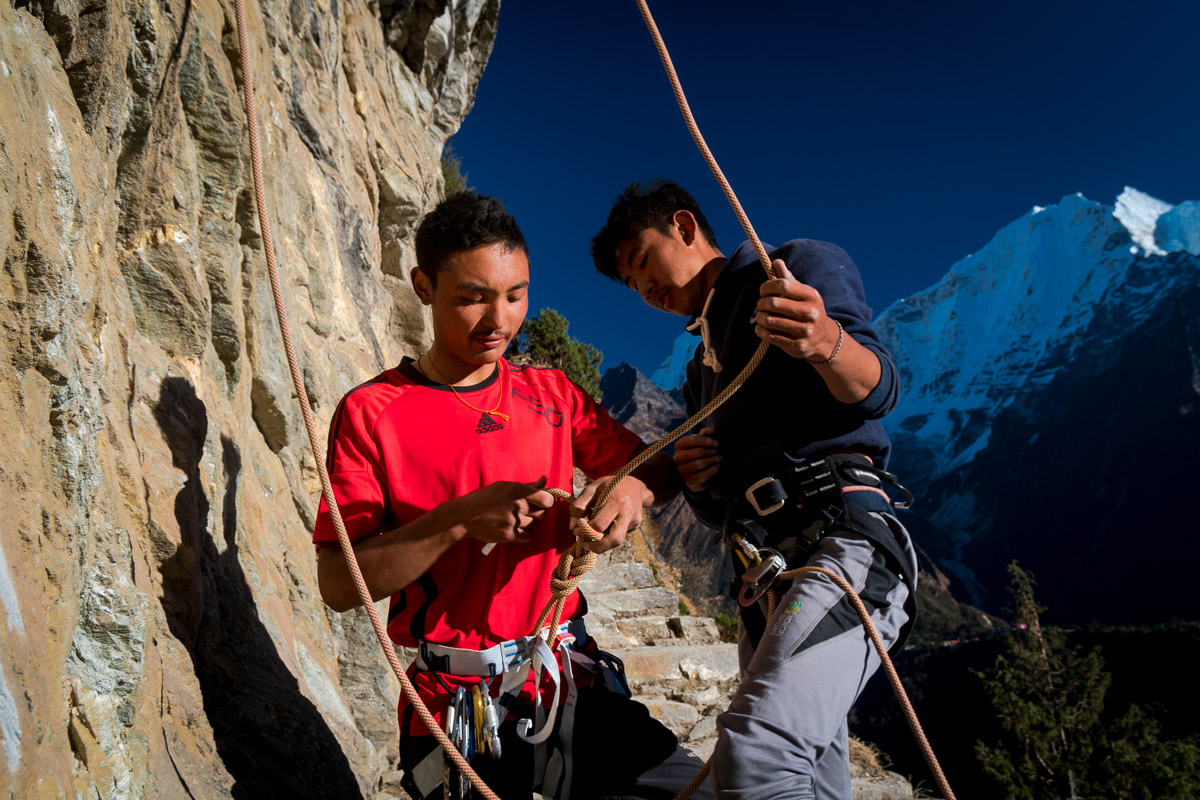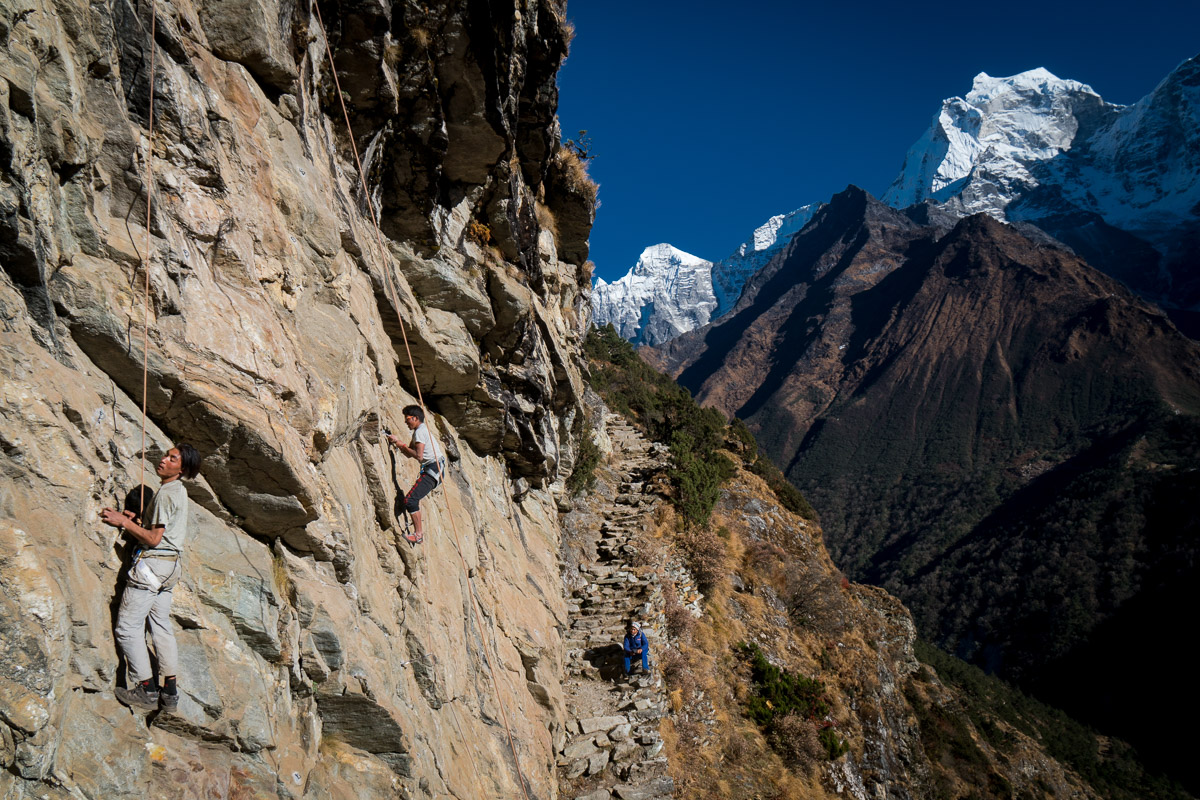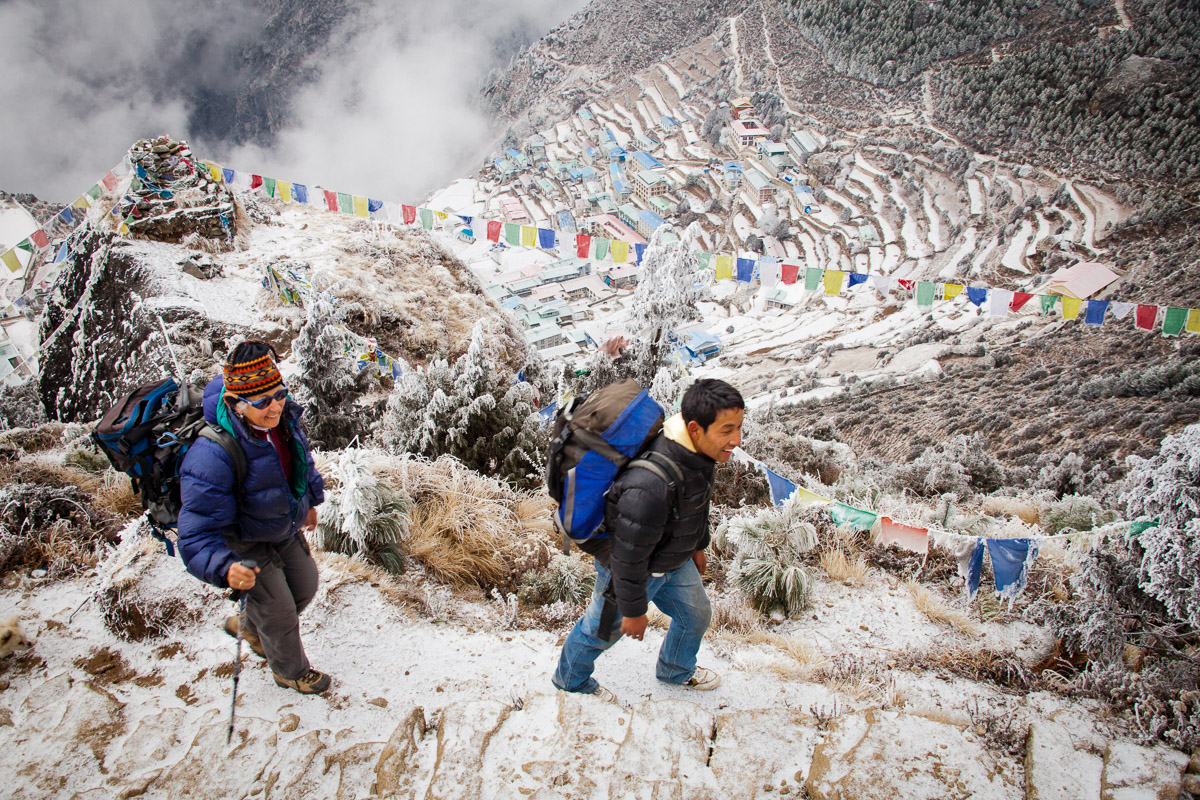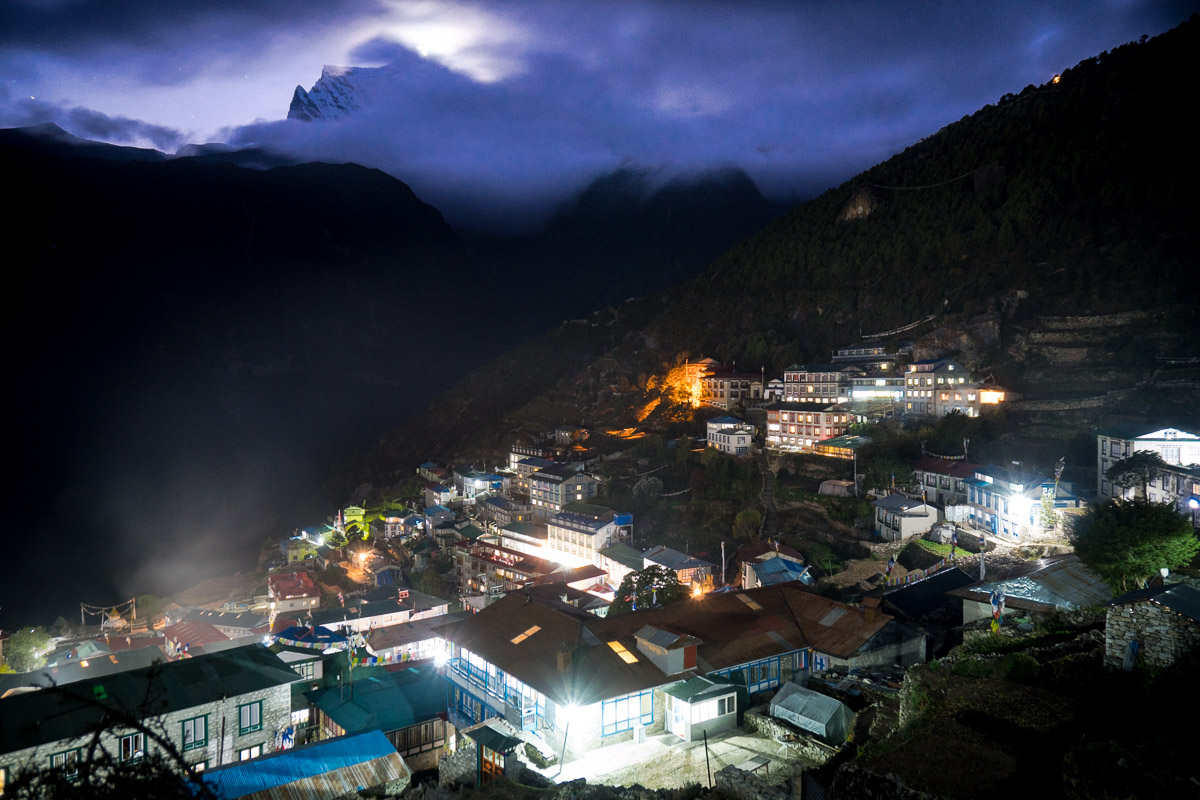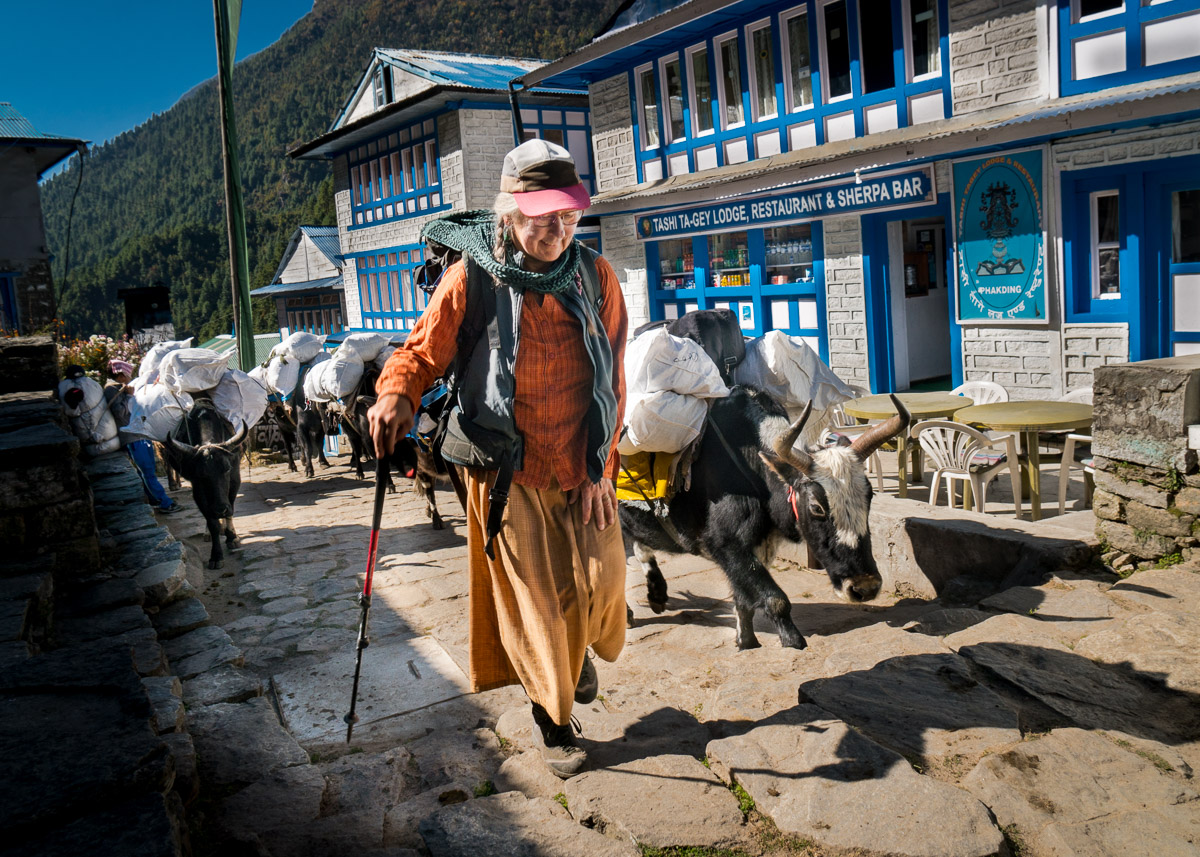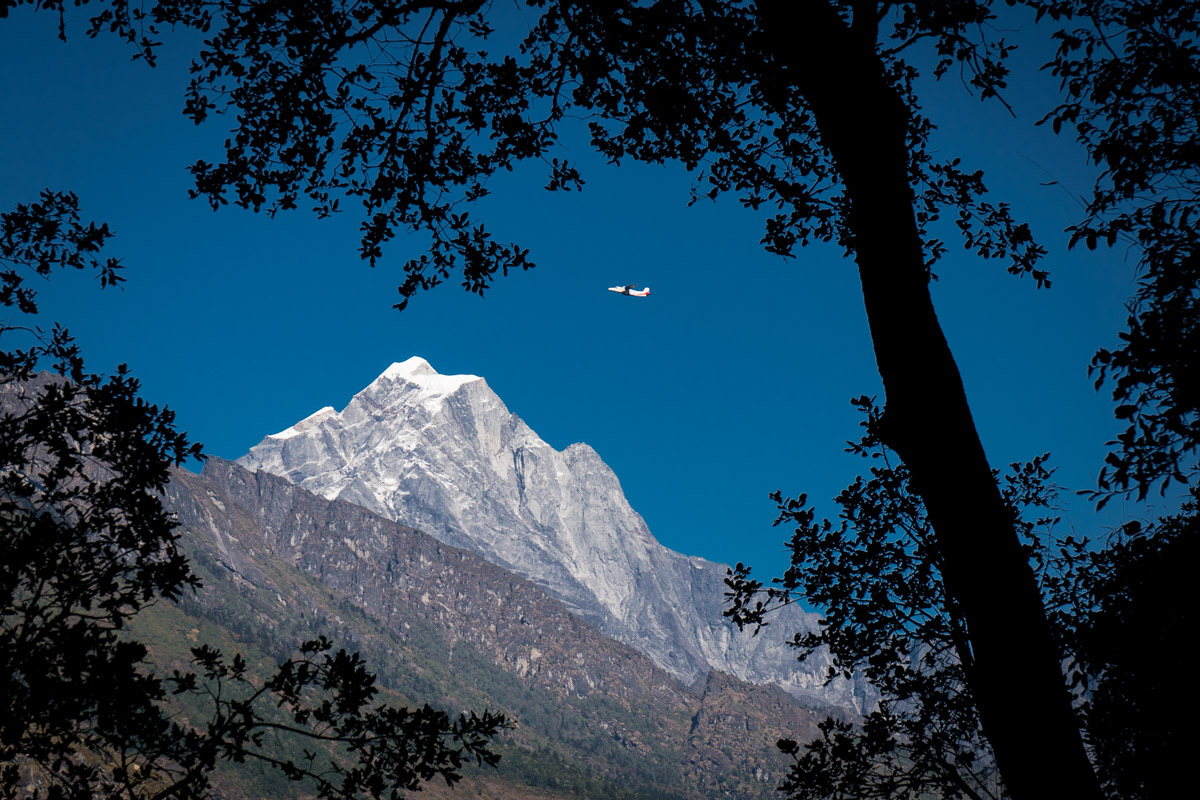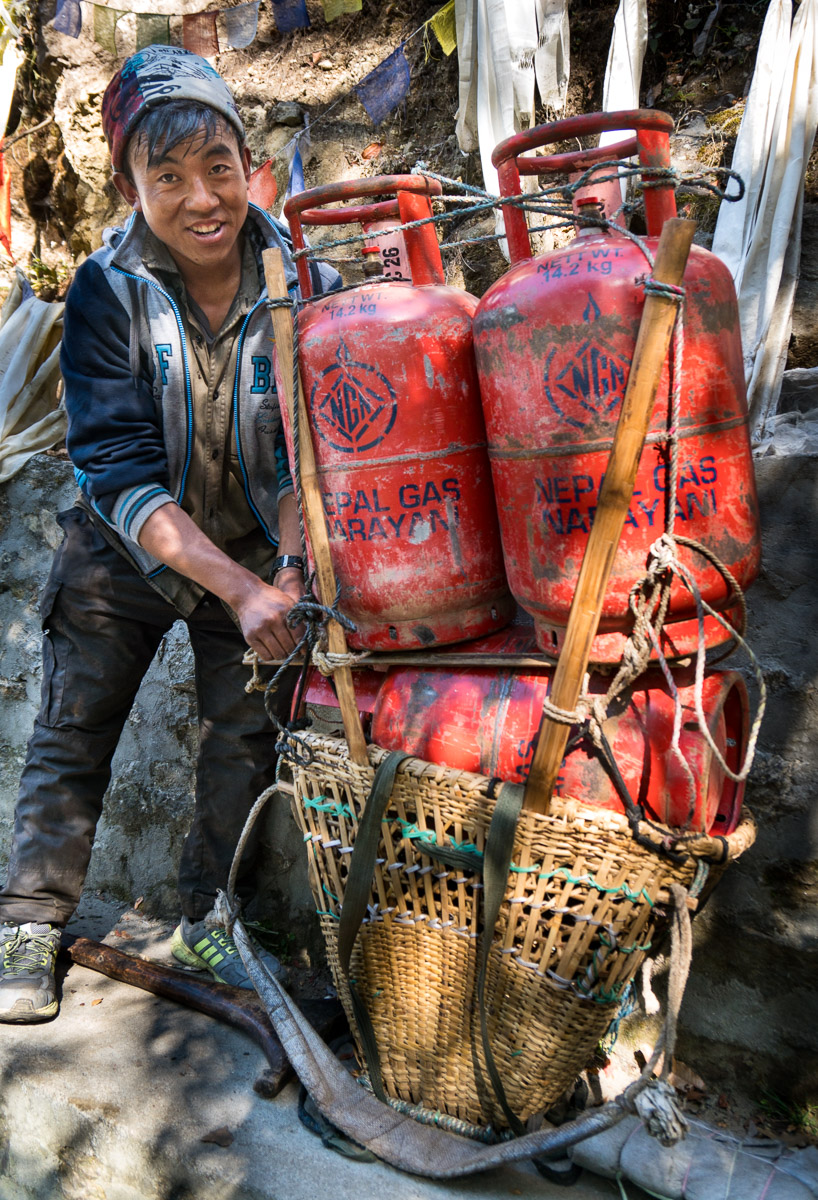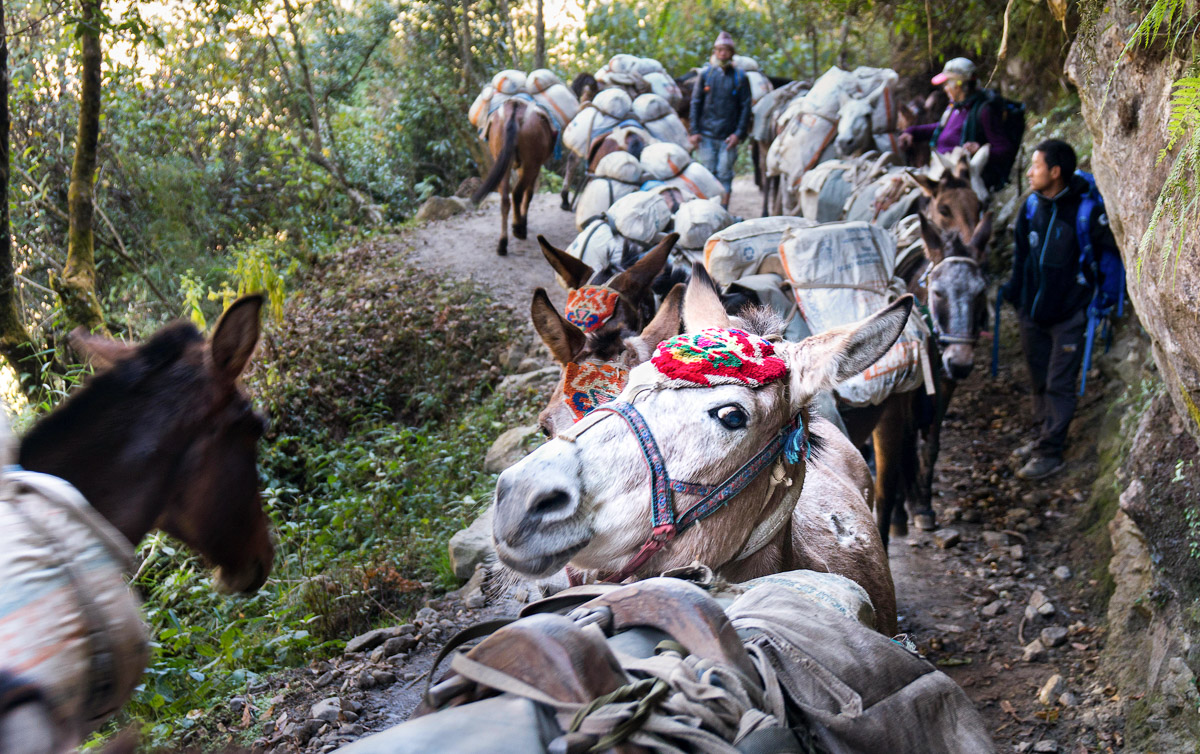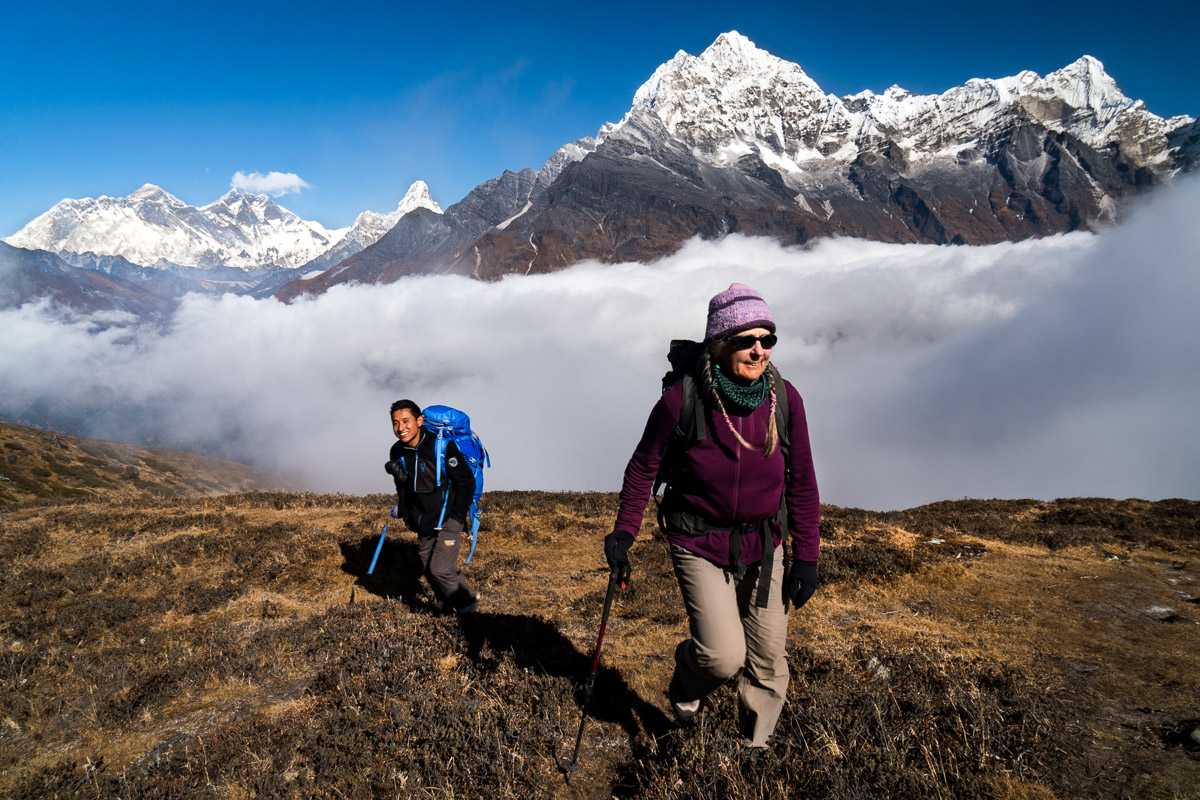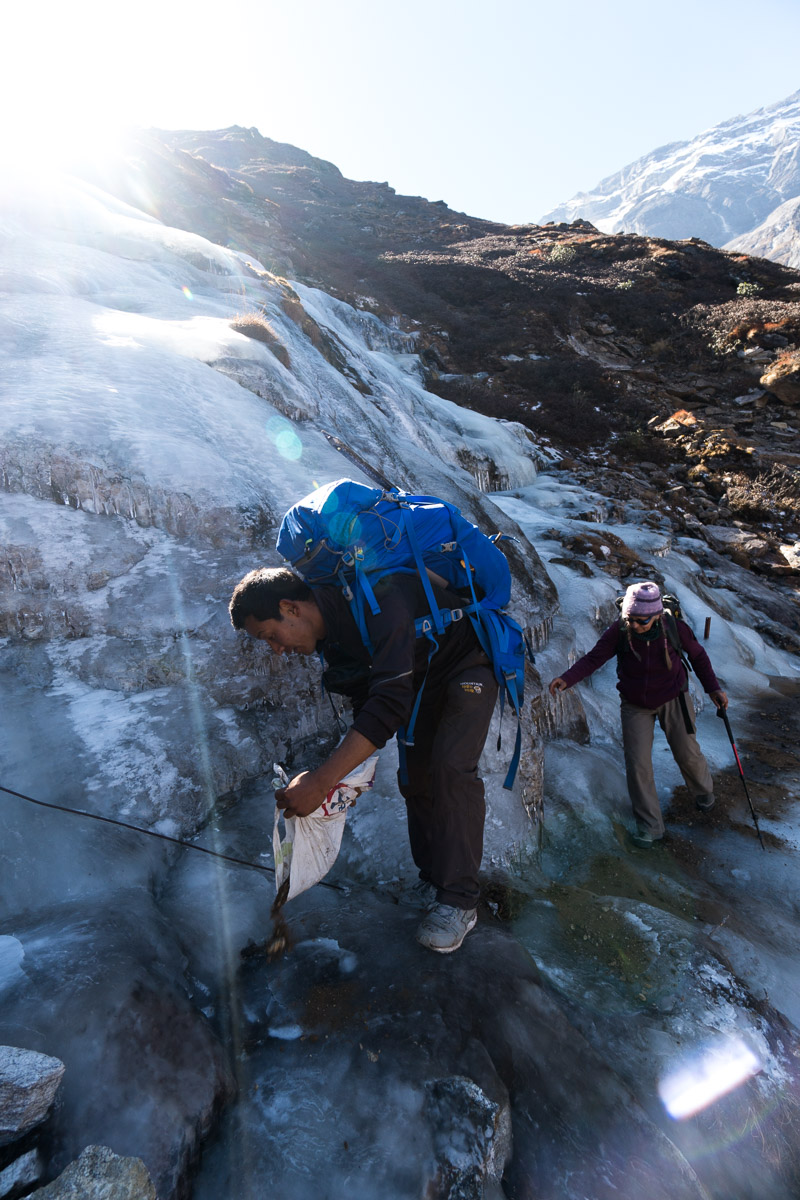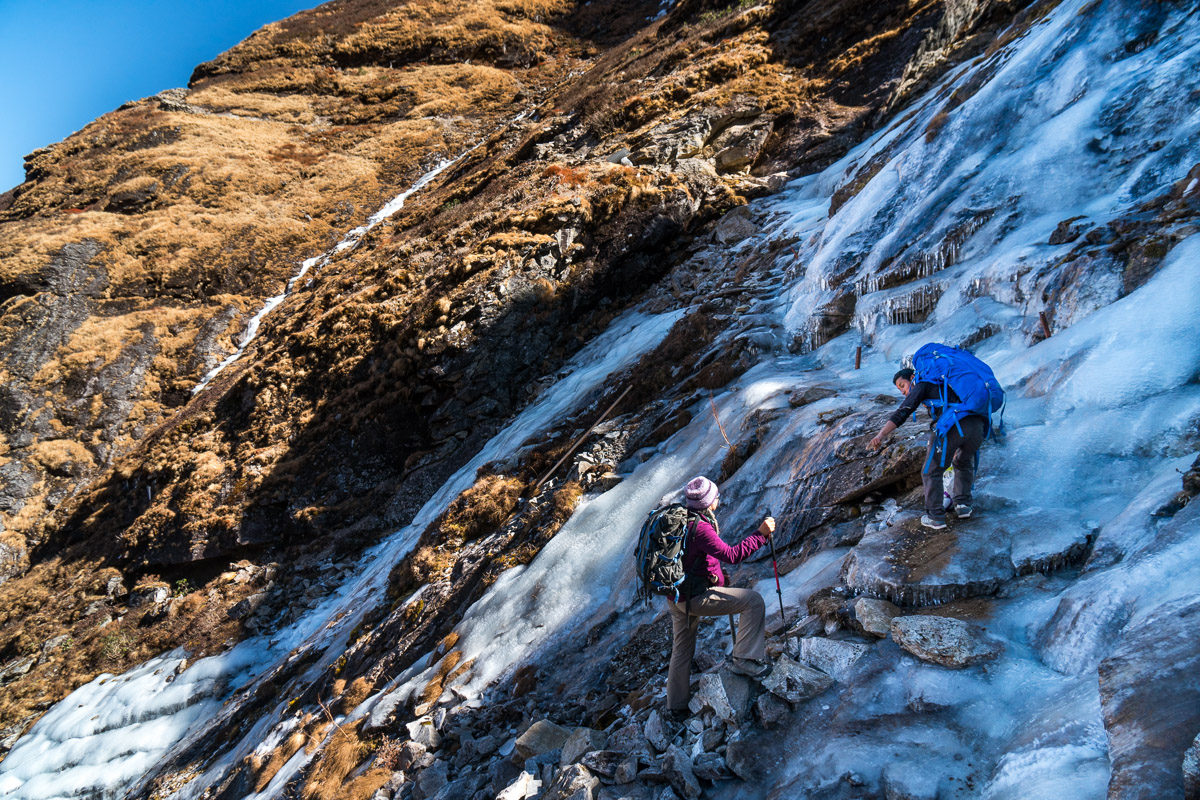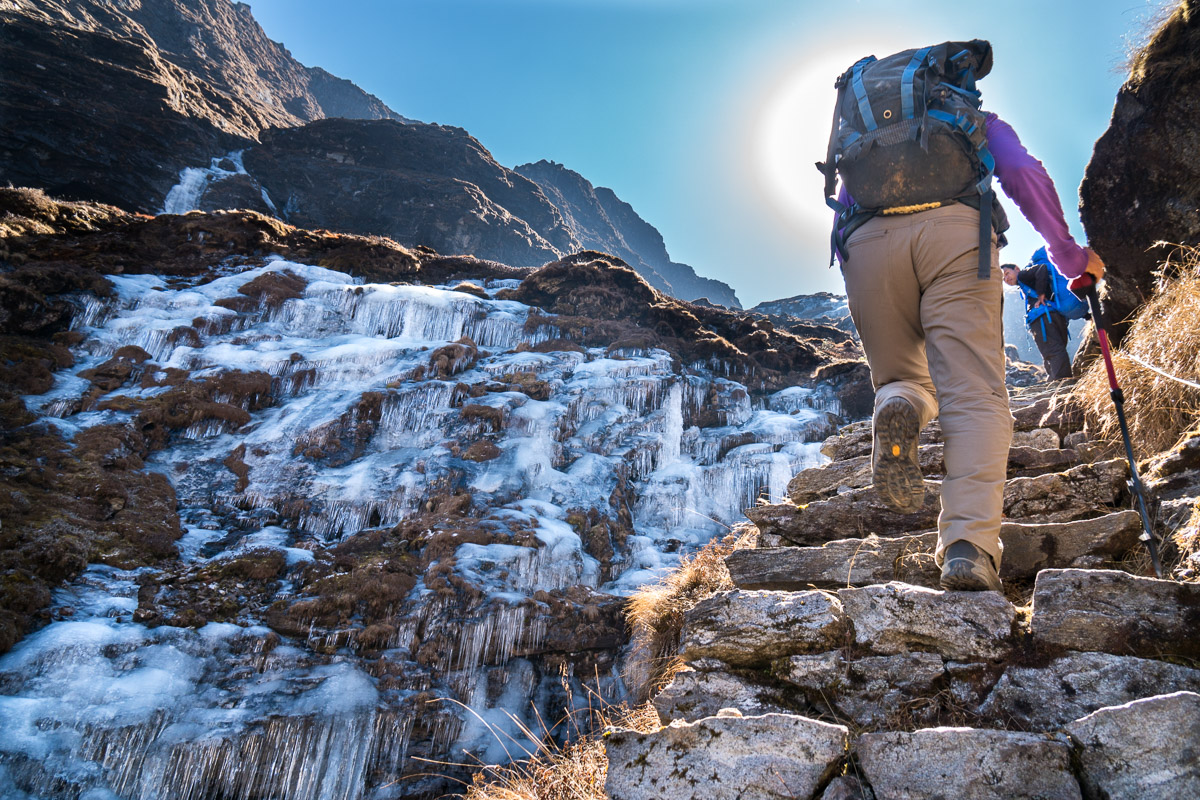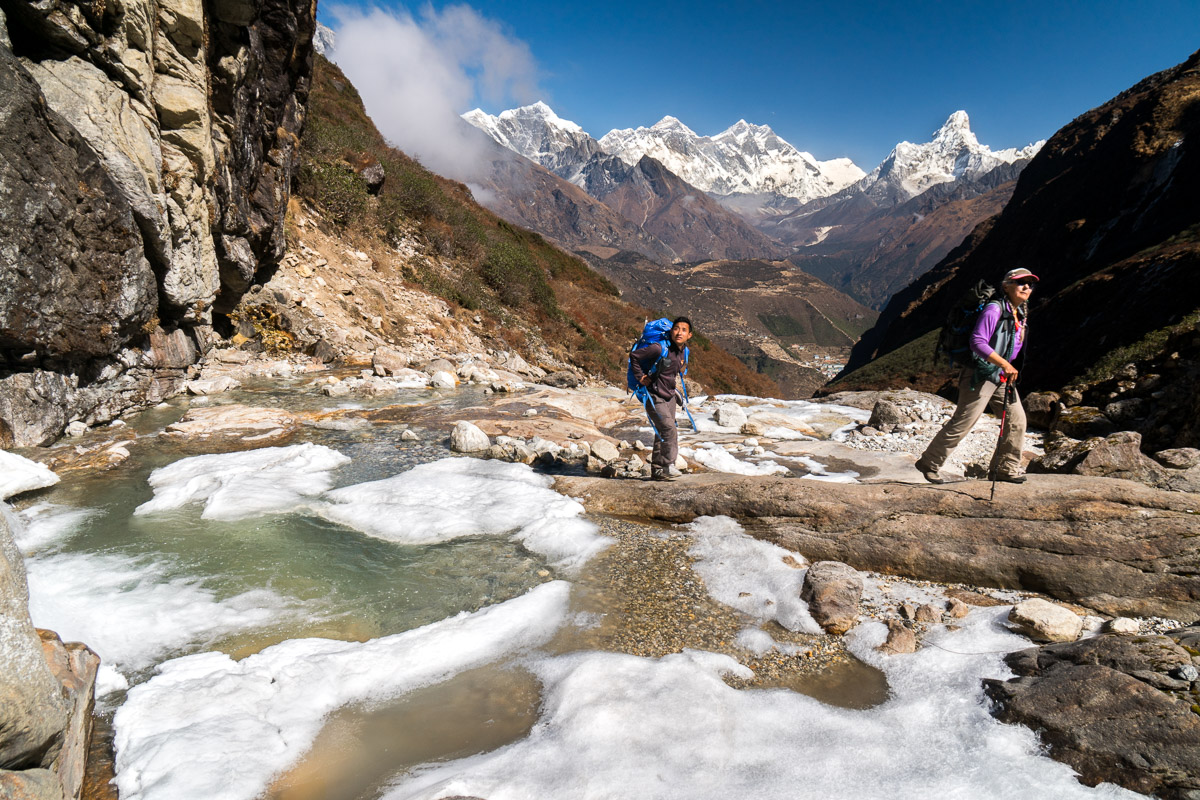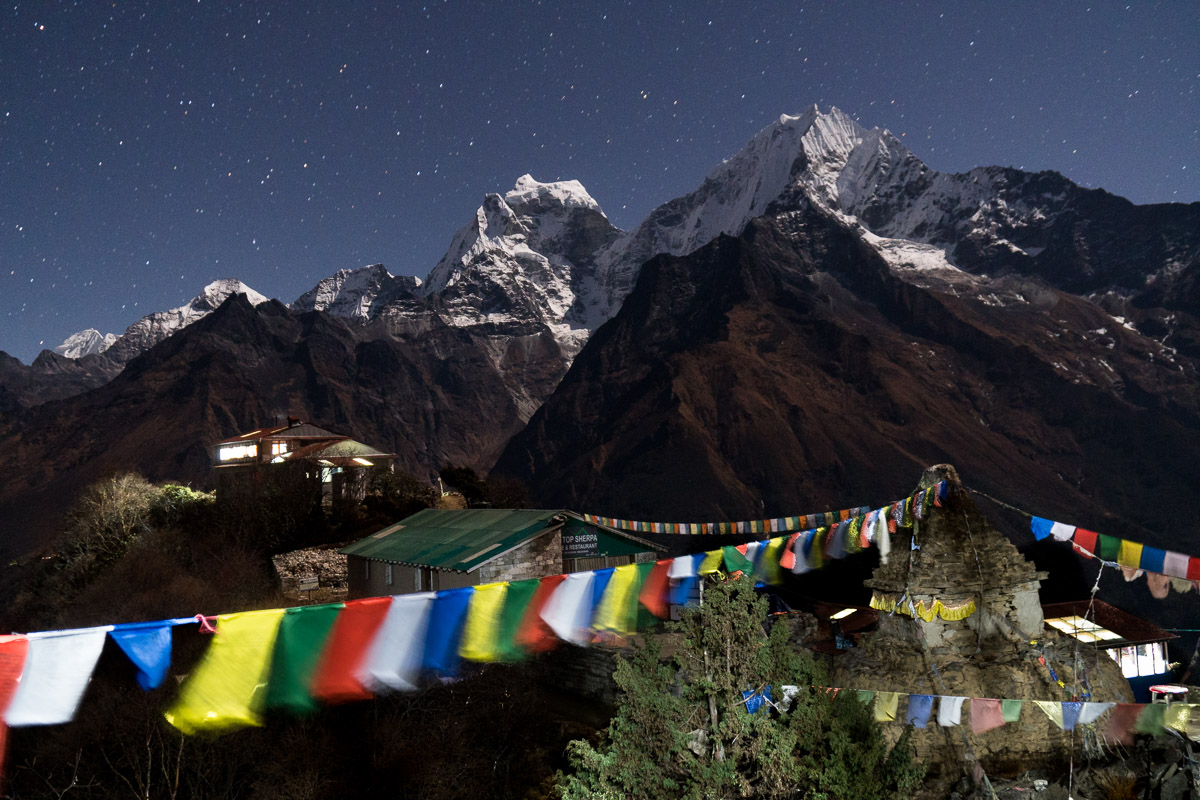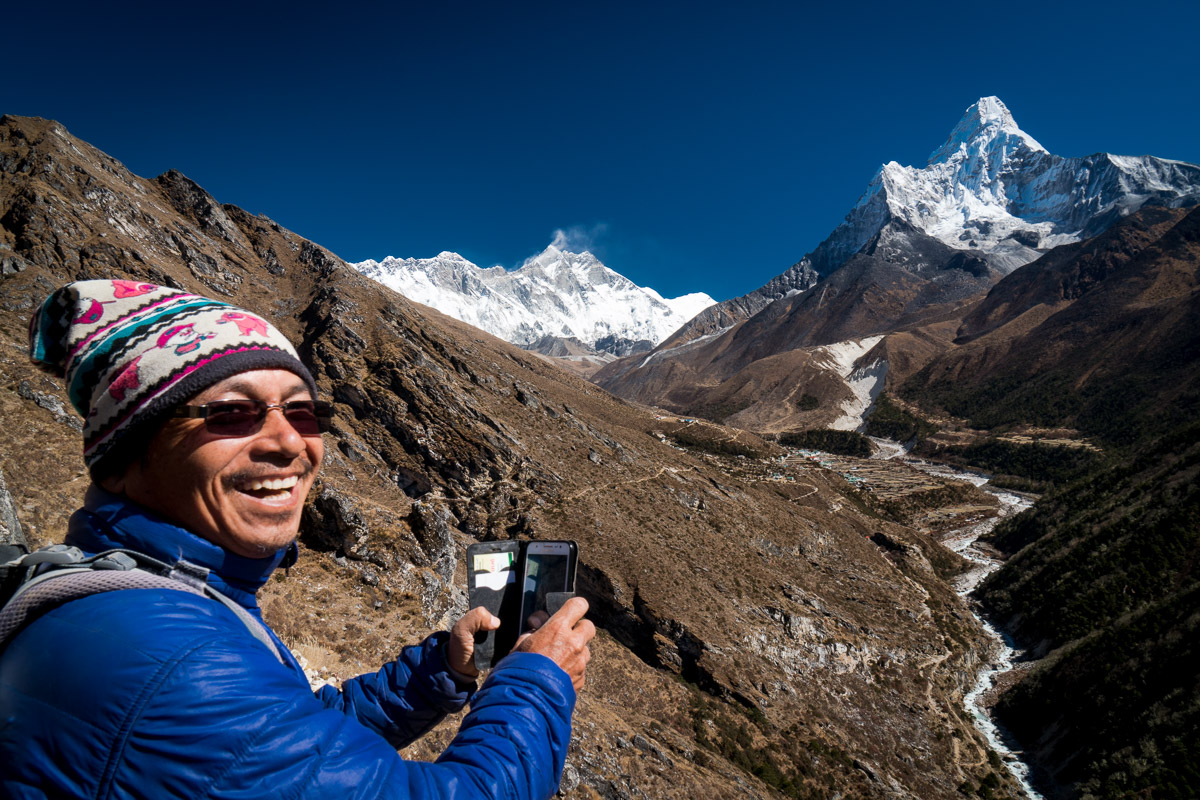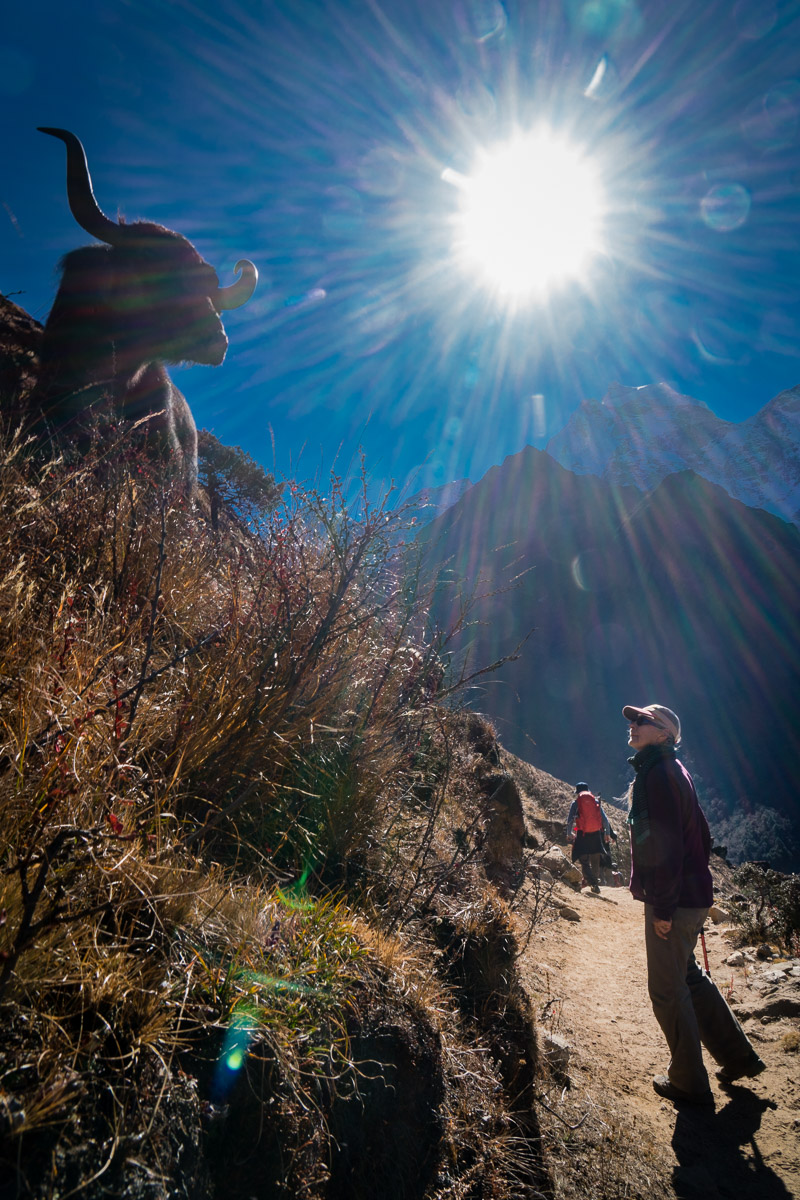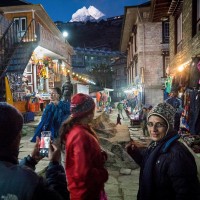Canada’s mountain national park managers would wet their pants if they could see how many tourists willingly shoehorn themselves into a relatively small mountain region in Nepal (Sagarmatha National Park is roughly the size of Yoho National Park in the Canadian Rockies), and there isn’t even a road there. The Khumbu experience today is a cross between the spectacle of the Calgary Stampede, feverish buying sprees in shops along the Grand Canyon of Banff Avenue, and the jet-fuelled excitement of helicopters lifting off from the siege of Saigon.
On a clear day, pre and post monsoon, up to 40 flights (x 17 pax) disgorge several hundred bedeshis on the paved airstrip at Lukla. In October of this year, 10,000 registered visitors, not counting airborne sight-seers, entered the area. Above Lukla, the constant thrum of helicopters signals expensive boutique aerial tours and altitude sickness-related rescue missions, most of which involve trekkers who have overestimated their fitness level. Disappointingly, there are a surprising number who take advantage of the insurance that covers emergency evacuations and take the easy way out.
Although our prime objective on this most recent trip was to visit with old friends, we also wanted to seek out trails and vistas that were new to us. Even after coming back to this region many times since the early 80s, there are still cool spur trails and vantage points to be discovered. On many levels, it really helps to hire a local guide if you want to maximize “authentic” cultural experiences and gain access to out of the way places – the lowlanders from the Kathmandu valley who are now leading treks in the Khumbu may or may not have ties with the Sherpa culture and Buddhist belief system.
If you truly want to experience the Khumbu like it was before the onslaught, there are a number of strategies to follow, all of which involve a little bit of discomfort and extra muscle power, but are well worth it. On a spectacular trail we did this time, within sight of Namche, in 11 hours we didn’t see another fellow bedeshi.
Most people fly to Lukla and walk from there. There are a number of less traveled ways to consider, the Jiri to Lukla trail being the easiest. This autumn we hiked from Tumlingtar in the Arun Valley and only saw 5 other foreigners in the first 7 days. An even more strenuous route exists as a branch off that trail past Mera peak, then up and over 5845 m AmphuLaptse Pass into upper Khumbu. For the more adventurous, trek into Makalu basecamp via Shipton Col, or the new Yeti trail up the Barun River drainage, then don your mountaineering gear and head for Sherpani Col. You’re guaranteed to see nobody else, local or foreigner, on that one. And consider a Rolwaling Valley trek from the west, with a spectacular exit to Khumbu via the 750m TrashiLaptsa.
A physically easier way of avoiding the crowds, but which involves a little discomfort in terms of dampness and low temps, is to hike in during monsoon, in July/Aug. Or, dead of winter, Jan/Feb. During monsoon, the mornings often dawn clear, with brilliant views of fresh snow on the peaks – bring a sturdy brolly. In winter, wrap yourself in a down jacket and winter sleeping bag, and make sure your hosts serve up steaming cups of rakshi to help warm the cockles.
Tashi delek!

